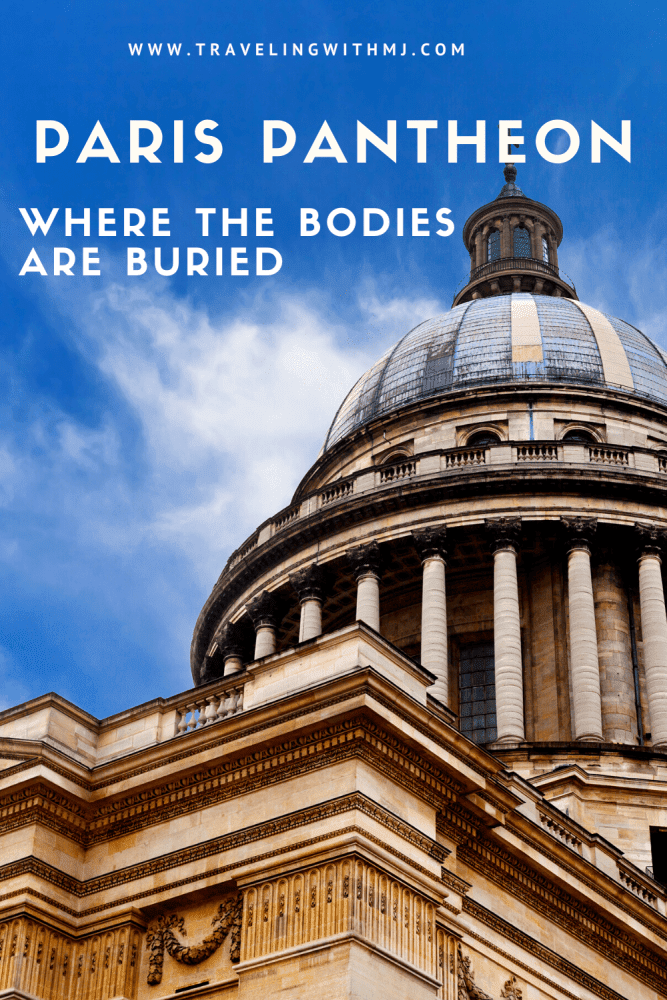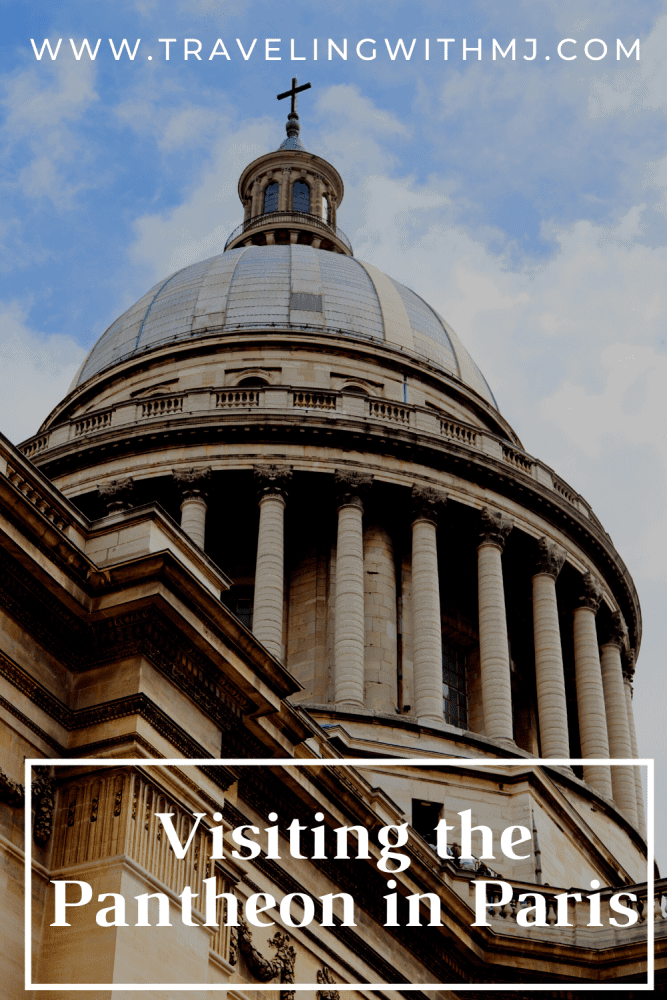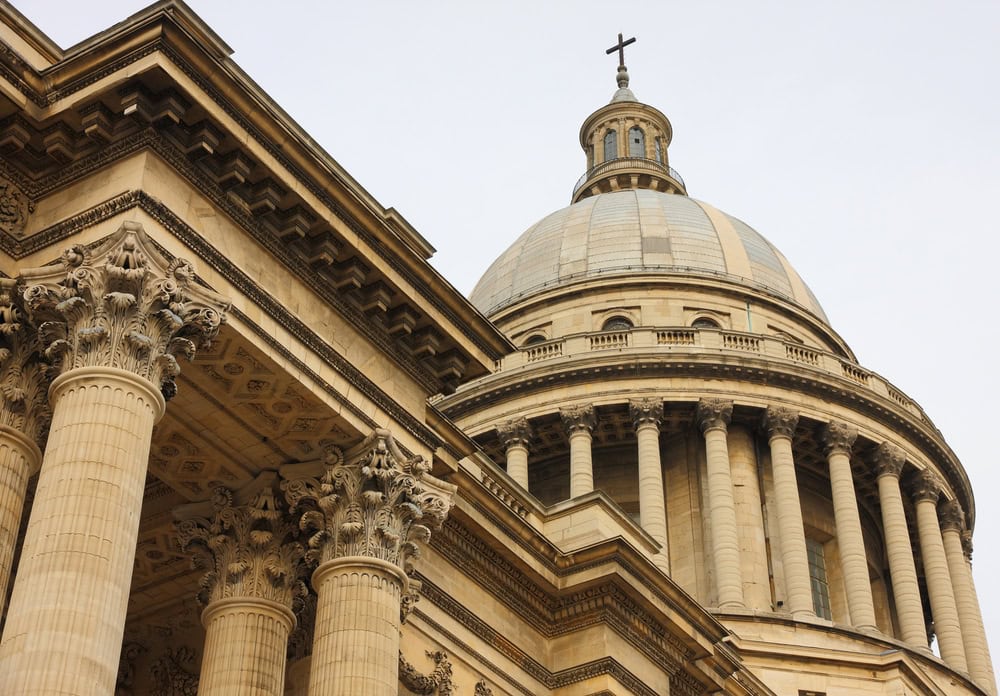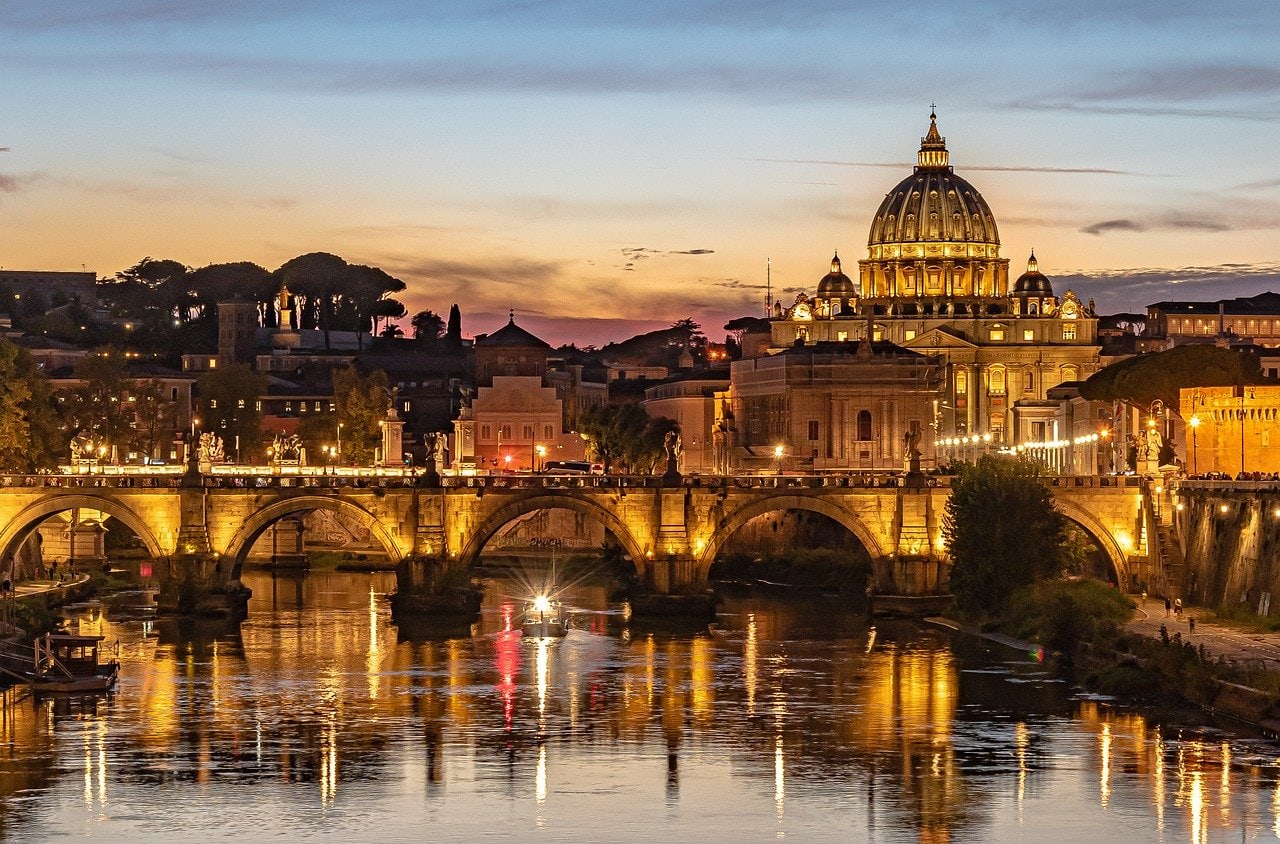Paris is known for its charming architectural attractions, rich history, bold romantic overtones, exquisite food, and more. On my first visit to France, I visited the Paris Pantheon, a neoclassical church in the Latin Quarter of Paris, and it quickly became one of my favorite places in the city.
The Pantheon in Paris was modeled after the Pantheon in Rome and has a domed top similar to the one on Saint Paul’s Cathedral in London. Although the Pantheon was originally an abbey, it now primarily serves as a burial place for famous French heroes, leaders, artists, and writers. The imposing structure is made of stone and marble and supported by 22 Corinthian-inspired pillars. The building’s entrance is headlined by the inscription “AUX GRANDS HOMMES LA PATRIE RECONNAISSANTE” (To great men, the grateful homeland). The interior of the building is decorated with sculptures crafted by renowned French sculptor Pierre Jean and artistic paintings that depict French history.
The elegance of this impressive masterpiece may be understated until you visit it.
History
The Pantheon was built before the Eiffel Tower and the Arc de Triomphe. It was the first structure that offered 360-degree views over Paris, the best views of the city.
The construction of the Pantheon came about as a promise made by King Louis XV in 1744. He suffered from a serious and mysterious illness (later believed to be gout). He vowed that if he recovered, he would build an edifice worthy of the patron saint of Paris, St. Genevieve. Louis recovered and had the Pantheon built on the site of the church of Sainte-Genevieve. Construction of the Pantheon began in 1758 and ended in 1789, at the beginning of the French Revolution. Like construction projects today, the Pantheon ran into delay after delay — most related to financial difficulties.
King Louis XV tasked Jacques-Germain Soufflot, his chief architect, with this monumental project. Architect Soufflot aspired to create a classical structure that would outrival St. Peter’s Basilica in Rome and St. Paul’s Cathedral in London. Unfortunately, he died before the building was completed. After Soufflot’s death, one of his students proceeded with the project. He deviated slightly from Scufflot’s initial blueprint but still ended up with one of the finest neoclassical monuments.
The completion of the Paris Pantheon construction coincided with the start of the French Revolution. It was the best of times, it was the worst of times. The Revolutionary government changed the building from a church sanctuary to a mausoleum for eminent Frenchmen. Over time, the building changed between mausoleum and church several times, and today it stands as a mausoleum where the remains of great Frenchmen – heroes, leaders, artists, and writers – are interred.
The Interior
The Pantheon is basically a Greek cross-shaped building with a domed center. When I walked into the Pantheon, it felt austere and cavernous, and I immediately started using my “library voice.” Around the walls are murals depicting religious and revolutionary figures as well as statuary and frescoes. I found the series of Joan of Arc particularly compelling.
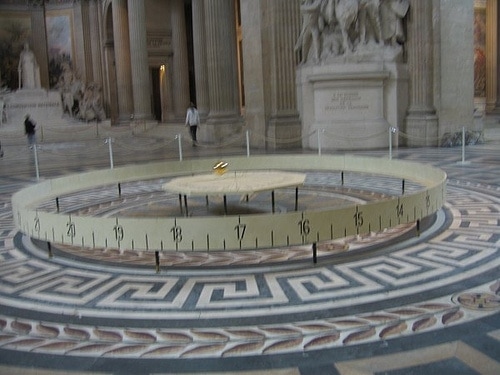
In the center of the Pantheon, beneath its dome, is a pendulum standing nearly 220 feet tall. This is Foucault’s Pendulum, named for physicist Leon Foucault. In 1851, he built the pendulum to conduct experiments demonstrating the earth’s rotation on its axis – against the then-conventional belief that it stayed still. The pendulum was installed in 1851 but was later moved to the Musée des Arts et Métiers, before returning to the Pantheon in 1995. Beautiful in its simplicity., the Foucault pendulum is a focal point beneath the central dome.
After appreciating all this art and history, you’ll have the option of visiting the necropolis (mausoleum) or climbing stairs to view Paris from the top.
It may sound morbid, but the Pantheon’s necropolis is also a work of art. More than 70 famous men, and five notable women, are buried in the subterranean chamber. There’s a permanent exhibition that provides information on the lives and achievements of those interred here. Over the years, there has been heated debate over who deserves and doesn’t deserve to be buried in this civic building, and today it takes an act of Parliament to be buried there. A few of the great men of France buried there include Alexandre Dumas (author of the Three Musketeers), Victor Hugo (author of Les Miserables and The Hunchback of Notre Dame), Voltaire, Rousseau, Emile Zola, Rene Descartes, Louis Braille, and Pierre and Marie Curie, the latter the first woman buried there.
I much preferred to climb up, however—all 206 steps to the colonnade beneath the dome. Don’t let the fact that this is a guided tour turn you away from this option. It’s only “guided” so you don’t get lost on the way up! The way is narrow and steep and sometimes can be a little disorienting. Don’t worry about making the climb at record speed — go slow and rest along the way if you need to. You won’t be the only one.
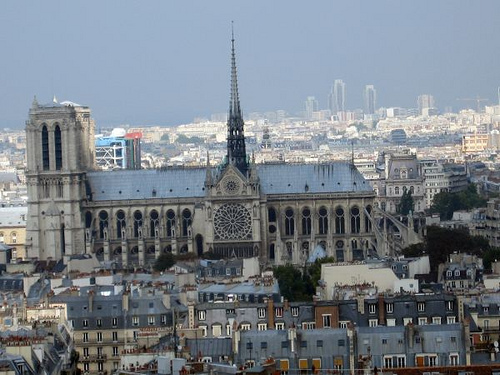
There are three distinct flights of stairs going up. The first flight elevates you to appreciate the amazing interior of the Pantheon. Next, you’ll head to a mezzanine with great views of city landmarks such as the Rue Scufllot and the Eiffel Tower. If you go to the final flight of stairs, you’ll get an all-around view of Paris. That view from the top is spectacular – a 360-degree view of all that Paris has to offer. This is one heck of a site to absorb all the beauty of Paris from a colonnaded balcony. One of the best views in the city, if you ask me. Walk around the top and take it all in.
Although this monument is open all year round, you can only access the dome from April to October. Those months are the peak season for tourism in Paris when the dome is open for visits.
Recommended Reading
It was the time of the French Revolution — a time of great change and great danger. It was a time when injustice was met by a lust for vengeance, and rarely was a distinction made between the innocent and the guilty. Against this tumultuous historical backdrop, Dickens’ great story of unsurpassed adventure and courage unfolds.
Learn more here.
If You Visit
Location: The Pantheon is located at Place du Pantheon, 75005, Paris, in the 5th arrondissement. The nearest metro is Cardinal Lemoine, and the nearest RER is Luxembourg. The Cardinal Lemoine and the Luxembourg station are less than seven minutes of walking distance to the Paris Pantheon. Paris can be an overwhelming city, but there are things to know before traveling to France that can ease your concerns.
Hours: Opening hours depend on the time of year, but are generally 10 am-6 m, open later during the spring and summer high tourism. The last admission is 45 minutes before closing. You can only visit the upper area from April through October, and departure times vary. I’d recommend checking for a convenient tour time when you first arrive and then working the remainder of your viewing around that time. Check before heading for a visit, as the monument is occasionally closed for ceremonies of security precautions.
Admission fees: 11.50 Euros. Free entry for those under 18, those under 26 who are citizens of one of the EU countries or are non-European permanent residents of France, for disabled visitors and their escorts, and the unemployed. It is an included site on the Paris Museum Pass, and if you’ll be visiting several attractions, that’s a cost-efficient option. You can purchase it online here. A variety of additional free days occur throughout the year, you may want to check when planning your visit. There’s an extra charge to access the upper portion of the Pantheon, which is only open between April and October.
Save this to your favorite travel and Paris Pinterest boards and plan your visit to the Paris Pantheon.
